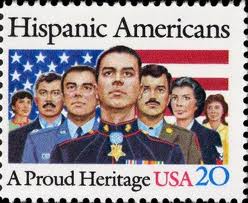What is it?
Welcome to this annual national celebration – currently in full-swing – commemorating the achievements, culture, and history of the largest minority group in the U.S. Latino Americans have contributed greatly, over the course of the past 500 years, to making this a truly diverse nation.
When is it?
September 15 to October 15 mark the dates for the observance of National Hispanic Heritage Month. It began in1968 as Hispanic Heritage Week and was expanded to a full 30-day period in 1988.
Why does it start in mid-September?
A number of Latin American countries celebrate their independence day on Sept. 15th: Costa Rica, El Salvador, Guatemala, Honduras and Nicaragua. Following on their heels is Mexico, with independence celebrated on the 16th, Chile on the18th, and Belize on the 21st.
Why does it continue on into mid-October?
One Latina nurse joking explained to me: “That’s just our way. If a party invitation is for Saturday night we’ll arrive on Friday night, and the party will still be going on Sunday.”
Another possible explanation is that it was stretched into the next month in order to include Columbus Day on October 12. Though Italian, Columbus’s four voyages to the “New World” were financed by the monarchs of Spain.
This is the only Month Of-type of national observance that I’ve ever heard of that spans two months. How about you?
Who’s considered Hispanic?
People who self-identify as Hispanic, generally those who have family that hails from: Spain, Mexico, the Caribbean, Central and South America.
Which is it — Latino/Latina or Hispanic?
As you’ve probably heard, a rose is a rose is a rose. Though some people prefer one term rather than the other, practically speaking, they are interchangeable. Some experts claim younger generations are more likely to self-identify as Latino (male) and Latina (female).
Where is it celebrated?
Coast-to-coast, baby! Look for major institutions, such as the Smithsonian, NPR, National Park Service – and even the National Football League – to mount special events, programming, and exhibits.
Why is it celebrated?
More and more Americans identify as being of Hispanic origin — 17% of the population, or more than 50 million citizens as of July 1, 2012, the latest figures from the U.S. Census Bureau. Latinos now comprise the largest racial or ethnic minority group in the nation. In fact, the size of our Hispanic population is the second-largest in the world, right behind Mexico which ranks #1 with a population of 112 million.
As the country becomes increasing Hispanic, even in states that historically have had few Latino citizens, it’s even more crucial that the nursing professions responds to the demographic shift. We must train more Hispanic nurses, help non-Hispanic nurses increase their cultural competency, and discover new ways to reach out to and serve Hispanic patients.
Jebra Turner is a health reporter and former H.R. director, where she oversaw workplace health and safety training programs for staff and clients. She lives in Portland, Oregon, and you can visit her online at www.jebra.com.
- Resumes, LinkedIn, and HR Portal Profiles, Oh My! - May 22, 2020
- Weight Management for Nurses: The Why’s and How’s of Losing or Maintaining Weight - February 18, 2020
- Mindfulness and Wellness Programs for Patients - October 14, 2019



